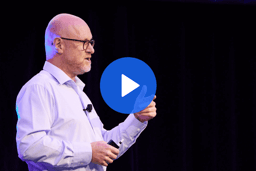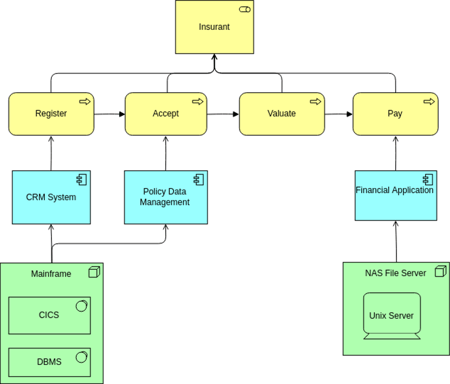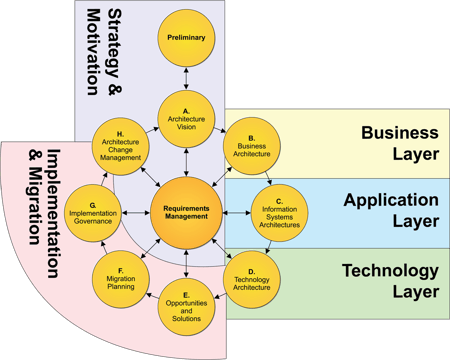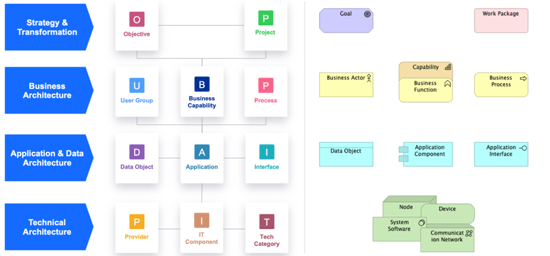[CONTINUED]
Key components of ArchiMate
The language structure of ArchiMate comprises two main elements: layers and aspects. These components work together to provide a comprehensive view of the enterprise architecture. The ArchiMate Framework encompasses both the Core Framework and the Full Framework. The Core Framework serves as the foundation, including the fundamental concepts, relationships, and layers of ArchiMate—Business, Application, and Technology. It forms the basis for modeling enterprise architecture.
On the other hand, the Full Framework expands upon the Core Framework by incorporating additional layers and viewpoints, extending its capabilities for a more comprehensive modeling approach. It provides a complete set of concepts, relationships, and viewpoints to address various architectural domains and perspectives.
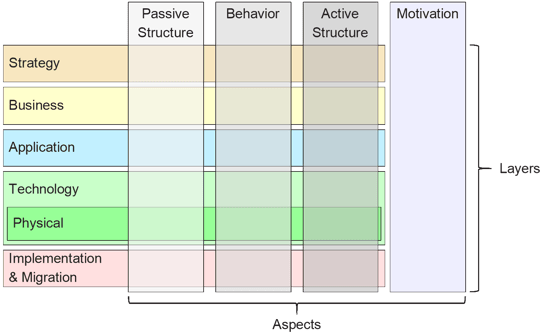 ArchiMate Full Framework
ArchiMate Full Framework
Aspects
Aspects represent different perspectives or views of the enterprise architecture. They provide specialized viewpoints that focus on specific aspects of the architecture. ArchiMate defines these primary aspects:
- Active Structure: The active aspect focuses on subjects that can perform behavior, representing the organization's structure, components, and properties. It includes concepts such as actors, business roles, application components, and infrastructure elements.
- Behavior: The behavioral aspect captures the dynamic aspects of the architecture, describing the behavior and interactions of the architectural elements over time. It includes concepts such as processes, functions, services, and interfaces.
- Passive Structure: The information aspect deals with the representation and management of data and information within the architecture. These are elements on which behavior is performed. It includes concepts such as data objects, business objects, and artifacts.
- Motivation: Focuses on modeling the drivers, goals, principles, requirements, and stakeholders that influence and shape the architecture. They provide the context of an enterprise’s architecture.
Active structure, Behavior, and Passive Structure are three primary aspects that are part of the Core Framework. ArchiMate introduces Motivation as the fourth aspect of the Full Framework.
Layers
Layers, on the other hand, represent different levels of abstraction within the architecture. They define a hierarchical structure that helps to organize and separate different domains or domains within the enterprise architecture. ArchiMate defines these primary layers:
- Strategy Layer: Represents the highest-level layer in the ArchiMate framework and focuses on capturing strategic aspects of an organization's enterprise architecture. It includes elements such as capabilities, business goals, drivers, principles, and policies.
- Business Layer: This represents the highest level of abstraction and focuses on modeling the business aspects of the architecture. It captures the organization's business processes, business actors, and products.
- Application Layer: Provides a bridge between the business layer and the technology layer. It models the software applications and their functionalities that support the business processes. It includes concepts such as application components, application services, application interfaces, and application collaborations.
- Technology Layer: This is the lowest level of abstraction and focuses on modeling the technology infrastructure that supports the applications and the business processes. It includes concepts such as devices, systems software, networks, and technology services.
- Physical Layer: Expands the Technology layer by incorporating physical infrastructure elements, such as servers, storage devices, and facilities.
- Implementation and migration Layer: Supports the modeling of transformation and change within the architecture, including project portfolios, work packages, and migration paths.
Business, Application, and Technology layers are the three primary layers that are part of the Core Framework. ArchiMate introduces the Strategy, Physical, and Implementation and Migration layers as additional layers as part of the Full Framework.
The layering approach in ArchiMate allows for a structured representation of the architecture, enabling a clear separation and understanding of different domains and their relationships. Each layer encapsulates specific elements and relationships that are relevant to that particular domain.
Together, aspects and layers provide a comprehensive framework for modeling and analyzing the enterprise architecture from different perspectives and levels of abstraction.
Relationships
ArchiMate features relationships connecting architectural elements. Key types include:
- Structural Relationships: Represent static construction of entities. These include composition (an object composed of others), aggregation (similar to composition but lifecycle independent), assignment (allocates responsibilities between active and passive elements), and realization (an entity fulfilling the contract of an interface).
- Dependency Relationships: Show dependencies between elements. Includes used by (one element uses another's services), access (behavioral entities accessing data entities), serve (an element providing its functionality), and influence (an element impacting another's properties).
- Dynamic Relationships: Describe entity behavior or sequence. They encompass flow (exchange of information or value), triggering (temporal or causal relationships), and association (generic relationship with no constraints).
By leveraging these expanded relationships, ArchiMate offers architects detailed and expressive language to represent the intricacies of the architecture, facilitating analysis, decision-making, and communication among stakeholders.
Viewpoints
ArchiMate viewpoints are predefined perspectives or templates that guide the creation of architecture views. A viewpoint defines a specific set of concerns, concepts, and relationships that are relevant to a particular stakeholder or purpose.
It helps structure the architecture documentation and facilitates effective communication with stakeholders by presenting the architecture from their perspective.
Each viewpoint in ArchiMate focuses on specific aspects of the architecture and highlights the elements and relationships that are most relevant to that viewpoint.
For example, a business process viewpoint (image below) may emphasize business processes and their dependencies, while an application cooperation viewpoint may emphasize the interactions between different application components.
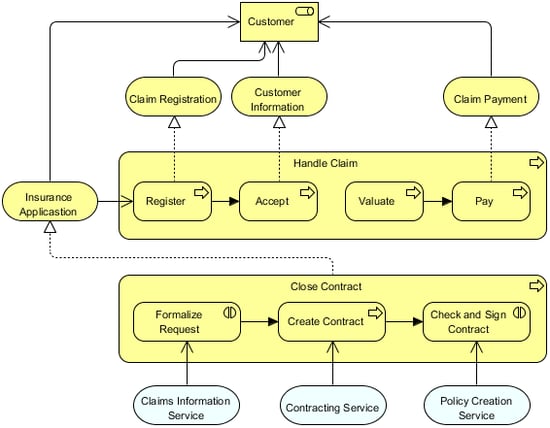 Business Process Cooperation Viewpoint example
Business Process Cooperation Viewpoint example
Viewpoints provide a means to filter and present the architecture information in a concise and meaningful way. They help stakeholders understand the architecture in relation to their specific concerns and enable them to make informed decisions based on the provided insights.
ArchiMate offers a range of predefined viewpoints, such as strategic, operational, capability, motivation, and technology viewpoints. These viewpoints can be customized or extended to suit the specific needs of an organization.
By utilizing ArchiMate viewpoints, architects can tailor their architecture views to different stakeholders, ensuring that the right information is presented in a clear and relevant manner.
[READ ON BELOW]






